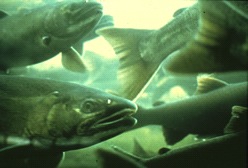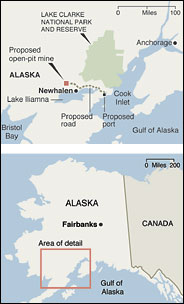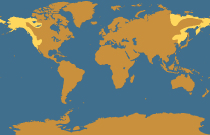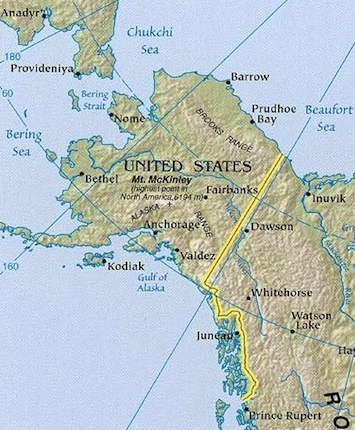The Salmon fishery and the mine in Bristol Bay, Alaska.
May 28, 2013
 I applaud Environmental Protection Agency [EPA] for undertaking such a rigorous scientific study of the Bristol Bay watershed. Your agency has now completed two thorough assessments of the region, and they have both come to the same conclusion: Massive mining projects like the pebble mine would be devastating to Bristol Bay. The agency's May 2012 report has found that "mining at this scale would cause the loss of spawning and rearing habitat for multiple species of anadromous and resident fish." The biological vulnerability to such a valuable resource is due to "A mine footprint of this scale would likely result in the direct loss of 87.5 to 141.4 km of streams and 10.2 to 17.3 km2 of wetlands," according to EPA's own findings. From the perspective of fisheries and water quality this is an accurate and important finding of facts. While the report is not the policy of the EPA (and was not to be quoted or cited), its findings bear on your forthcoming decision and should be a matter of public record.
I applaud Environmental Protection Agency [EPA] for undertaking such a rigorous scientific study of the Bristol Bay watershed. Your agency has now completed two thorough assessments of the region, and they have both come to the same conclusion: Massive mining projects like the pebble mine would be devastating to Bristol Bay. The agency's May 2012 report has found that "mining at this scale would cause the loss of spawning and rearing habitat for multiple species of anadromous and resident fish." The biological vulnerability to such a valuable resource is due to "A mine footprint of this scale would likely result in the direct loss of 87.5 to 141.4 km of streams and 10.2 to 17.3 km2 of wetlands," according to EPA's own findings. From the perspective of fisheries and water quality this is an accurate and important finding of facts. While the report is not the policy of the EPA (and was not to be quoted or cited), its findings bear on your forthcoming decision and should be a matter of public record.
If salmon were abundant, which they are not, and we were not faced with Arctic thaw, one might want to sacrifice a fishery in the name of short-term economic gain for pebbles. But since fisheries are a potentially renewable resource you need to decide in favor of the long-term commercial fishery and the needs of the subsistence people for whom these resources are so durable. So, the time for study is over.
Now is the time for you to lead by enforceable actions to protect Bristol Bay's environment, wildlife and people. Your painstaking review has provided overwhelming evidence that large-scale mining in such an ecologically productive and biologically sensitive area would pose grave and unacceptable risks to a natural treasure.
An "extraordinary ecosystem of Bristol Bay, including its legendary wild salmon runs, its abundant populations of wolves, bald eagles and whales, its Native communities that depend on salmon for survival and a $480-million economy that is built on the annual miracle of 40 million returning salmon." hangs in the balance.
Bristol Bay's wild salmon fishery provides 14,000 jobs and is valued at more than $1.5 billion annually. It also supplies nearly half of the global supply of sockeye salmon. Salmon sustain the culture, language and spirituality of Alaska Natives, who have relied on subsistence fishing for thousands of years.
 The proposed pebble mine would risk this economic, cultural and ecological powerhouse by gouging one of the world's largest gold and copper mines out of the headwaters of Bristol Bay. It would generate billions of tons of contaminated waste, devastate up to 90 miles of streams, destroy thousands of acres of wetlands and threaten the area's legendary salmon runs–the linchpin of the Bristol Bay ecosystem, which supports wildlife such as bears, eagles, wolves and seals.
The proposed pebble mine would risk this economic, cultural and ecological powerhouse by gouging one of the world's largest gold and copper mines out of the headwaters of Bristol Bay. It would generate billions of tons of contaminated waste, devastate up to 90 miles of streams, destroy thousands of acres of wetlands and threaten the area's legendary salmon runs–the linchpin of the Bristol Bay ecosystem, which supports wildlife such as bears, eagles, wolves and seals.
Your agency's findings all demonstrate that building a mine of this scale in this location is an unacceptably destructive venture, and it must be stopped. I urge you to do so by using EPA's authority under Section 404(c) of the Clean Water Act–for the sake of the Bristol Bay watershed, its world-class salmon fishery and its people.
 Please show that sustaining an enduring natural resource–in the spirit of both President Roosevelt's philosophies and the subsequent decisions of Congress and the Executive branch to secure Alaska's wild sources of water, fisheries, forests and wildlife–is still the mission of the EPA in the 21st century. We have a legacy to protect and an opportunity to display leadership to the world in this matter.
Please show that sustaining an enduring natural resource–in the spirit of both President Roosevelt's philosophies and the subsequent decisions of Congress and the Executive branch to secure Alaska's wild sources of water, fisheries, forests and wildlife–is still the mission of the EPA in the 21st century. We have a legacy to protect and an opportunity to display leadership to the world in this matter.
Sincerely,
Joseph V. Siry


Related articles:
Map from New York Times:
By LISA W. DREW. New York Times, Published: April 26, 2005.
 I applaud Environmental Protection Agency [EPA] for undertaking such a rigorous scientific study of the Bristol Bay watershed. Your agency has now completed two thorough assessments of the region, and they have both come to the same conclusion: Massive mining projects like the pebble mine would be devastating to Bristol Bay. The agency's May 2012 report has found that "mining at this scale would cause the loss of spawning and rearing habitat for multiple species of anadromous and resident fish." The biological vulnerability to such a valuable resource is due to "A mine footprint of this scale would likely result in the direct loss of 87.5 to 141.4 km of streams and 10.2 to 17.3 km2 of wetlands," according to EPA's own findings. From the perspective of fisheries and water quality this is an accurate and important finding of facts. While the report is not the policy of the EPA (and was not to be quoted or cited), its findings bear on your forthcoming decision and should be a matter of public record.
I applaud Environmental Protection Agency [EPA] for undertaking such a rigorous scientific study of the Bristol Bay watershed. Your agency has now completed two thorough assessments of the region, and they have both come to the same conclusion: Massive mining projects like the pebble mine would be devastating to Bristol Bay. The agency's May 2012 report has found that "mining at this scale would cause the loss of spawning and rearing habitat for multiple species of anadromous and resident fish." The biological vulnerability to such a valuable resource is due to "A mine footprint of this scale would likely result in the direct loss of 87.5 to 141.4 km of streams and 10.2 to 17.3 km2 of wetlands," according to EPA's own findings. From the perspective of fisheries and water quality this is an accurate and important finding of facts. While the report is not the policy of the EPA (and was not to be quoted or cited), its findings bear on your forthcoming decision and should be a matter of public record.
 Please show that sustaining an enduring natural resource–in the spirit of both President Roosevelt's philosophies and the subsequent decisions of Congress and the Executive branch to secure Alaska's wild sources of water, fisheries, forests and wildlife–is still the mission of the EPA in the 21st century. We have a legacy to protect and an opportunity to display leadership to the world in this matter.
Please show that sustaining an enduring natural resource–in the spirit of both President Roosevelt's philosophies and the subsequent decisions of Congress and the Executive branch to secure Alaska's wild sources of water, fisheries, forests and wildlife–is still the mission of the EPA in the 21st century. We have a legacy to protect and an opportunity to display leadership to the world in this matter.

